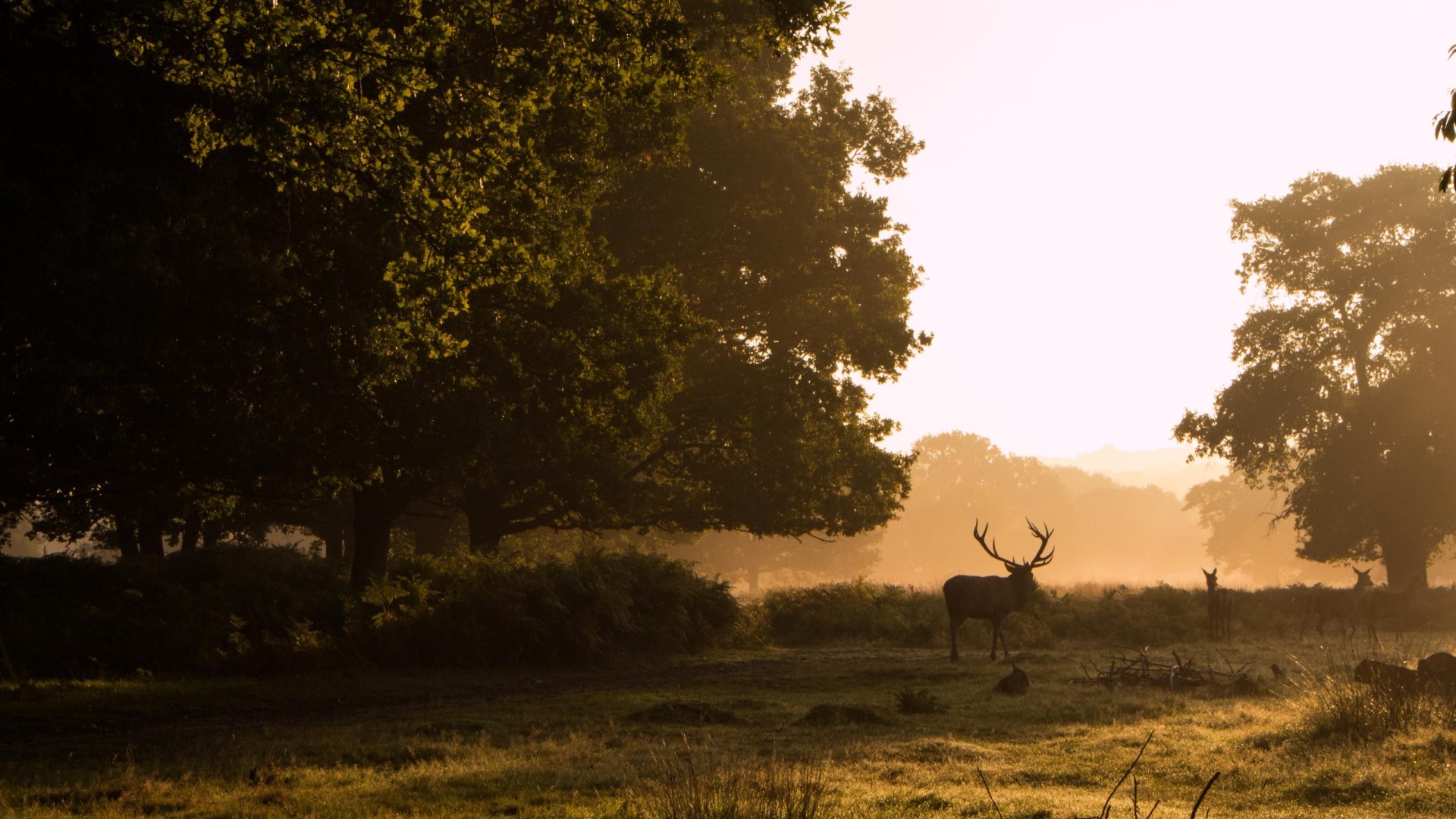Go deer spotting in Richmond Park
Explore Richmond Park, a National Nature Reserve and London’s largest Site of Special Scientific Interest.
Highlights
- Spot the wildlife. Richmond Park is home to many ancient trees, herds of deer, and a wide range of flowers, birds, and rare insects.
- Admire the flowering shrubs in the Isabella Plantation, a 40-acre woodland garden.
- Enjoy the scenery on two wheels with a cycle ride through Richmond Park.
What to See and Do
A National Nature Reserve
Immerse yourself in nature in Richmond Park, the largest of London’s parks. The wild landscape is the ideal place for a walk that takes you right away from the hustle and bustle. Look out for deer – the park is home to both red deer and fallow deer. A word of warning: don’t let children feed them or try and get too close for a selfie, they are wild animals and their behaviour can be a little unpredictable at times.
Explore the park by bike: Richmond Park offers both on- and off-road cycle routes suitable for all ages and abilities. If you don’t have your bike with you, you can hire cycles at Parkcycle near the Roehampton gate.
King Henry’s Mound
Admire the view from King Henry’s Mound, thought to be the remains of a Bronze Age tomb. Legend has it that it was on this mound that King Henry Vlll waited for the rocket signal from the Tower of London to show that Anne Boleyn had been executed. Whether the story is true or not, King Henry’s Mound offers a fantastic tree-framed eyeline to St Paul’s Cathedral. A telescope is available for an unbeatable view.
Isabella Plantation
Delight in the flowering shrubs and trees in the Isabella Plantation, a 40-acre woodland garden with hidden glens and bubbling streams. It was first planted in the 19th century and is now home to notable collections of azaleas, camellias, and rhododendrons, as well as many other rare plants. The flowers are at their colourful best in spring but you will discover much of interest at any time of year. The plantation is gardened organically and many nectar-rich plants have been added to supply food to insects and birds.
Richmond Park in Film
Thanks to its wild landscapes, the wealth of wildlife, and its proximity to London, Richmond Park is a popular location for film and TV programs. Discover the locations where the 1969 movie Anne of The Thousand Days was filmed – particularly poignant since the park was once a favourite hunting ground of Henry Vlll. More recently, Disney chose the park’s woodlands for several scenes of the movie Into the Woods. It has also frequently been used by natural history broadcasters, including David Attenborough and the BBC Springwatch team.
Did you know: (5 interesting facts!)
- Thanks to its wide variety of habitats, Richmond Park was classified as an SSSI (Site of Special Scientific Interest) in 1992. The park is the largest area of dry acid grassland in London and has been a deer park since the 17th century. Its ancient trees provide a unique ecosystem for rare beetles and other invertebrates.
- Richmond Park has been used as a royal hunting ground for centuries. Records from the 13th century show that the park was then known as the Manor of Sheen. Its name was changed to Richmond during the reign of Henry Vlll, who often enjoyed hunting here.
- The park was originally established as a royal park by King Charles l, who moved his court to Richmond Palace ( sadly no longer in existence) to escape an outbreak of the plague in the capital. The surrounding walls constructed at that time remain.
- Richmond Park was first opened to the public by Edward Vll in the early 20th century. During the First World War, the park was used for cavalry training and was also home to a military hospital.
- White Lodge, a Grade 1 listed Georgian building in Richmond Park, has been home to the Royal Ballet School since the mid-1950s. Today, it is recognised as one of the world’s leading ballet schools.
History
- The history of Richmond Park goes back further than any of the other Royal Parks in London. It is first mentioned as a royal hunting ground in the 13th century.
- 1625 – Charles 1 moved his court to Richmond Palace and enclosed the surrounding land to create a park for fallow and red deer. Residents retained rights of way across the parkland.
- 1847 – Pembroke Lodge became the home of Lord John Russell, the Prime Minister. His grandson, Bertrand Russell, later lived here. The building has now been given a new lease of life as a restaurant with lovely views over the Thames Valley.
- The 1940s – the Isabella Plantation is created from an area of boggy woodland.
- 1992 – Richmond Park is declared to be a Site of Special Scientific Interest, the largest of its kind in London.
Facilities
A visitor centre at Pembroke Lodge provides information, maps, and nature guides. There is also a gift shop selling souvenirs and gifts.
Roehampton Cafe serves hot and cold food and drinks and is located near the Roehampton Gate. Broomfield Hill, Pen Ponds car park, and adjacent to Pembroke Lodge.
For a quick snack or hot drink, refreshment points are found at Pen’s Pond car park, Broomfield Hill, and near Pembroke Lodge.
Pembroke Lodge is a superb Georgian mansion situated at the highest point of the park, the perfect setting to enjoy classic and contemporary English cuisine.
Blue badge parking is available at Peg’s Pond Gate.
